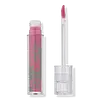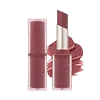What's inside
What's inside
 Key Ingredients
Key Ingredients

 Benefits
Benefits

 Concerns
Concerns

 Ingredients Side-by-side
Ingredients Side-by-side

Hydrogenated Polyisobutene
EmollientHydrogenated Polydecene
EmollientPentaerythrityl Tetraisostearate
EmollientEthylene/Propylene/Styrene Copolymer
Microcrystalline Wax
Emulsion StabilisingButylene/Ethylene/Styrene Copolymer
Bis-Diglyceryl Polyacyladipate-2
EmollientMica
Cosmetic ColorantCaprylic/Capric Triglyceride
MaskingPentaerythrityl Tetra-Di-T-Butyl Hydroxyhydrocinnamate
AntioxidantCI 75470
Cosmetic ColorantWater
Skin ConditioningCannabidiol - Synthetically Produced
AntioxidantQuillaja Saponaria Root Extract
MaskingCI 77891
Cosmetic ColorantCI 77492
Cosmetic ColorantHydrogenated Polyisobutene, Hydrogenated Polydecene, Pentaerythrityl Tetraisostearate, Ethylene/Propylene/Styrene Copolymer, Microcrystalline Wax, Butylene/Ethylene/Styrene Copolymer, Bis-Diglyceryl Polyacyladipate-2, Mica, Caprylic/Capric Triglyceride, Pentaerythrityl Tetra-Di-T-Butyl Hydroxyhydrocinnamate, CI 75470, Water, Cannabidiol - Synthetically Produced, Quillaja Saponaria Root Extract, CI 77891, CI 77492
Dimethicone
EmollientDibutyl Adipate
EmollientHydrogenated Polyisobutene
EmollientSynthetic Beeswax
Emulsion StabilisingVinyl Dimethicone/Methicone Silsesquioxane Crosspolymer
Diisopropyl Dimer Dilinoleate
EmollientPolymethylsilsesquioxane
Polyglyceryl-2 Triisostearate
EmulsifyingCI 77891
Cosmetic ColorantDimethicone Crosspolymer
Emulsion StabilisingCI 77491
Cosmetic ColorantSilica
AbrasiveCaprylic/Capric Triglyceride
MaskingCopernicia Cerifera Wax
Rubus Occidentalis Seed Oil
EmollientSimmondsia Chinensis Seed Oil
EmollientCaprylic/Capric/Myristic/Stearic Triglyceride
EmollientDicalcium Phosphate
AbrasiveSorbitan Isostearate
EmulsifyingDiphenylsiloxy Phenyl Trimethicone
Skin ConditioningEuphorbia Cerifera Wax
Phytosteryl/Octyldodecyl Lauroyl Glutamate
Skin ConditioningPolyglyceryl-2 Diisostearate
EmulsifyingDimethicone/Vinyl Dimethicone Crosspolymer
Skin ConditioningStearalkonium Hectorite
Gel FormingSilica Dimethyl Silylate
EmollientSucrose Tetrastearate Triacetate
EmollientPropylene Carbonate
SolventTocopherol
AntioxidantParfum
MaskingCI 15850
Cosmetic ColorantCI 42090
Cosmetic ColorantCI 77499
Cosmetic ColorantMica
Cosmetic ColorantCI 15985
Cosmetic ColorantCI 17200
Cosmetic ColorantCI 77492
Cosmetic ColorantTriethoxycaprylylsilane
Dimethicone, Dibutyl Adipate, Hydrogenated Polyisobutene, Synthetic Beeswax, Vinyl Dimethicone/Methicone Silsesquioxane Crosspolymer, Diisopropyl Dimer Dilinoleate, Polymethylsilsesquioxane, Polyglyceryl-2 Triisostearate, CI 77891, Dimethicone Crosspolymer, CI 77491, Silica, Caprylic/Capric Triglyceride, Copernicia Cerifera Wax, Rubus Occidentalis Seed Oil, Simmondsia Chinensis Seed Oil, Caprylic/Capric/Myristic/Stearic Triglyceride, Dicalcium Phosphate, Sorbitan Isostearate, Diphenylsiloxy Phenyl Trimethicone, Euphorbia Cerifera Wax, Phytosteryl/Octyldodecyl Lauroyl Glutamate, Polyglyceryl-2 Diisostearate, Dimethicone/Vinyl Dimethicone Crosspolymer, Stearalkonium Hectorite, Silica Dimethyl Silylate, Sucrose Tetrastearate Triacetate, Propylene Carbonate, Tocopherol, Parfum, CI 15850, CI 42090, CI 77499, Mica, CI 15985, CI 17200, CI 77492, Triethoxycaprylylsilane
Ingredients Explained
These ingredients are found in both products.
Ingredients higher up in an ingredient list are typically present in a larger amount.
This ingredient is an emollient, solvent, and texture enhancer. It is considered a skin-softener by helping the skin prevent moisture loss.
It helps thicken a product's formula and makes it easier to spread by dissolving clumping compounds.
Caprylic Triglyceride is made by combining glycerin with coconut oil, forming a clear liquid.
While there is an assumption Caprylic Triglyceride can clog pores due to it being derived from coconut oil, there is no research supporting this.
Learn more about Caprylic/Capric TriglycerideCi 77492 is also hydrated iron III oxide. It's sole purpose is to give a yellow hue to products.
Iron III oxides are classified as inorganic chemicals for coloring.
Synthetically created Ci 77492 is considered safer than those naturally found. This is because the synthetically created version may contain less impurities. Iron oxides are generally non-toxic and non-allergenic.
Learn more about CI 77492Ci 77891 is a white pigment from Titanium dioxide. It is naturally found in minerals such as rutile and ilmenite.
It's main function is to add a white color to cosmetics. It can also be mixed with other colors to create different shades.
Ci 77891 is commonly found in sunscreens due to its ability to block UV rays.
Learn more about CI 77891Hydrogenated Polyisobutene is a synthetic polymer. Polymers are compounds with high molecular weight. Hydrogenated Polyisobutene is an emollient and texture enhancer.
In one study, Hydrogenated Polyisobutene showed better skin hydration levels than Caprylic/Capric Triglyceride. As an emollient, it helps keep your skin soft and hydrated by trapping moisture in.
Hydrogenated Polyisobutene is often used as a mineral oil replacement.
Learn more about Hydrogenated PolyisobuteneMica is a naturally occurring mineral used to add shimmer and color in cosmetics. It can also help improve the texture of a product or give it an opaque, white/silver color.
Serecite is the name for very fine but ragged grains of mica.
This ingredient is often coated with metal oxides like titanium dioxide. Trace amounts of heavy metals may be found in mica, but these metals are not harmful in our personal products.
Mica has been used since prehistoric times throughout the world. Ancient Egyptian, Indian, Greek, Roman, Aztec, and Chinese civilizations have used mica.
Learn more about Mica